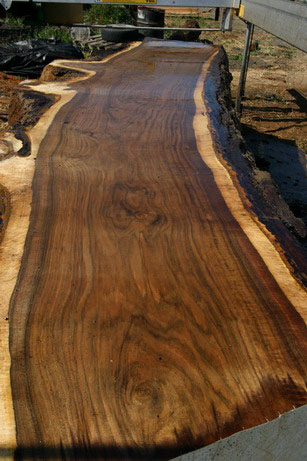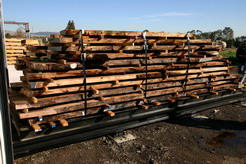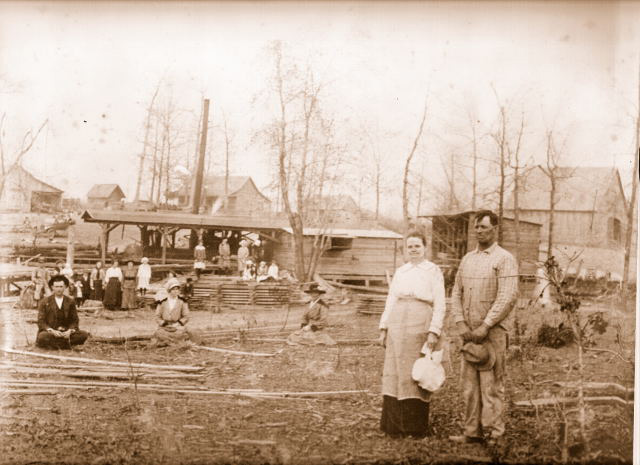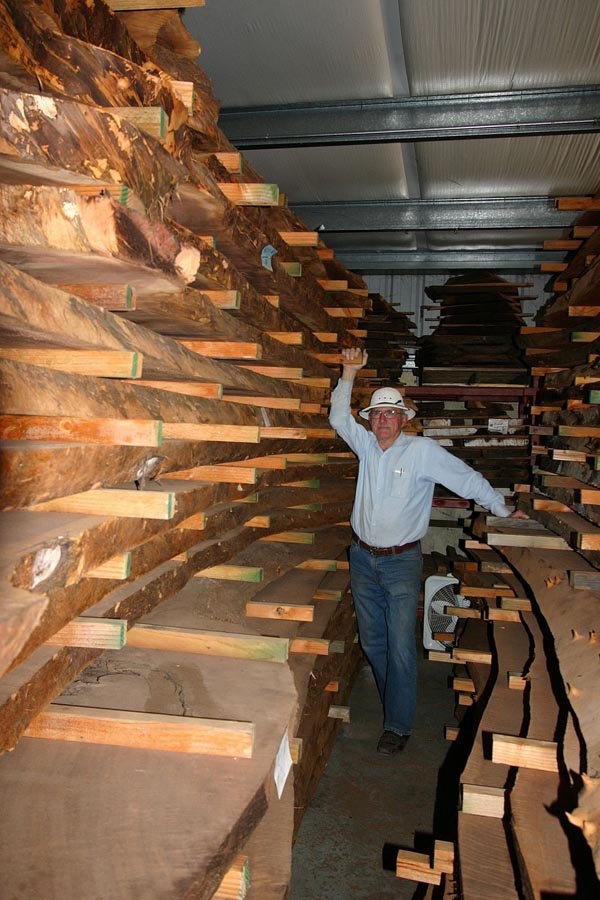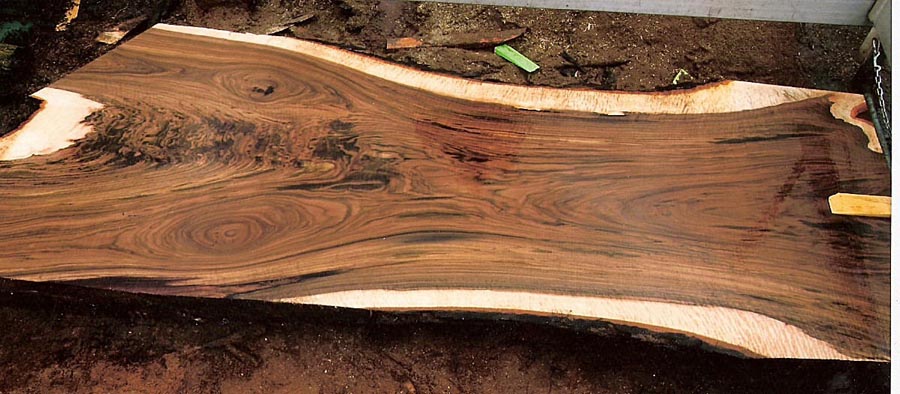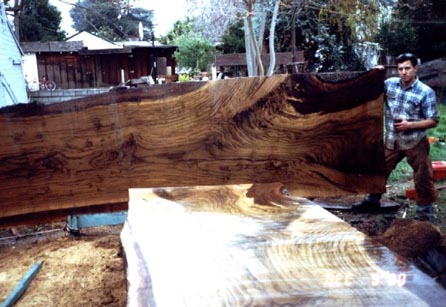
Jim Baker is a retired biology teacher, and that may explain in part why he was drawn to the unusual and rather limited business he currently runs. He cuts and sells fancy figured slabs of walnut trees. However, instead of felling healthy trees, he cuts up dead and downed trees.
“There are some really huge walnut trees that are dying in California,” Jim explained, “and we are making usable slabs from them. We locate large trees that are dying or are being removed with the proper permits, and then cut, mill and dry the slabs. They are rare; we sometimes get fewer than one per year, but when they do come along, they are spectacular. When we find one, we go mill it on site. It’s like a party.”
Although Baker Hardwoods is a post-retirement career for Jim, wood is firmly in his history. “Milling has been in our family since the early 1900s,” he recounted, “going back to my great-grandfather and my grandfather. The break came with my father, who worked construction after coming to California. I, too, worked in construction for a bit, drove a forklift, then went to Japan in 1961 after graduating from San Jose State University.
“The reason I went to Japan was to train for the 1964 Olympics in judo. I didn’t make the team, but I met my wife there. I got a master’s degree in Asian studies while in Japan, then came home and went back to school to get teaching credentials. I took a job teaching at the university level in 1966. In addition, I started a judo club in Silicone Valley, which I ran until last year.
“Later, I took a job as a science teacher at a boys’ ranch for delinquent boys, largely because it was out in the country. I stayed there for more than two decades. It was a great experience. We had mountains, trees, creeks, a shop and a library filled with wood books. Once the boys finished their academic work, I would let them get involved in wood projects, which most of them liked. I made a few things, too, but the main focus was to help the boys.
“We’d collect small logs for woodworking, so I eventually picked up a small chainsaw mill to deal with them. Then, in 1989, I met the man who claimed to have invented the Alaskan Chainsaw Mill, and learned how to process California walnut from him. He sold me a larger sawmill, and I started sawing wood and stacking it up. We eventually bought even larger mills that could handle wood up to 66 inches wide. Gradually, I started selling a bit of it, and before I knew it I had a side business in processing and selling walnut. In 1996, I retired from the teaching job, and my hobby business became a real business.
“In this line of work, production is limited by the number of walnut trees available, and that is pretty limited. I keep it very specialized: I only do slabs, not musical instrument sets or custom furniture cutting or anything else. My customers range from individuals who want an unusual dining table to companies looking for unique conference tables and artists seeking striking pieces for their work. Sizes range from small pieces, mostly taken from stump wood and great for jewelry box makers, to slabs that may exceed five feet wide and sixteen feet long. Most of the wood is Claro walnut.
“Claro walnut lives up to 250 years, but once the tree starts to decline, it is often taken down. We don’t cut the trees down ourselves, but we will go on site to mill those that are too big to move. In one case, a retirement home was being enlarged and the tree had to go; in another, a huge tree came down in a storm and had to be removed. I just have to be patient until we get a call for a tree, and that can be months. It is not as if you can go into the forest and simply choose it.
“The final products I sell are rough but dried slabs, usually milled at twelve quarter for the larger ones, and ten or eight for the smaller. We then air dry them for four years after cutting. Most of the requests I get are for slabs that are too big to have come from the smaller, grafted trees culled from walnut orchards, a major industry in California. Consequently, much of the wood I cut comes from ranches needing large trees removed.
“There’s not too much competition in this field, since most people won’t wait four years for big slabs to dry. Cutting it is easy; it’s the drying that’s the problem. Fortunately, this is not really a serious business for me; I do it because I enjoy it, selling mostly via word of mouth and through the Internet.”
Although it sounds like a business that offers far more work than reward, Jim has his reasons for pursuing it. “When I was teaching,” he recounted, “I didn’t have any money, but was always looking for wood for projects. In addition to providing unusual slabs for artists and artisans, I’d also like to sell small pieces cheaply to people in the position I was in. To that end, I plan to put up pictures of the small pieces on the website soon so woodworkers can pick out what they want.”
That sounds like a delightful wood smorgasbord for hungry woodworkers, and one well worth visiting frequently.
